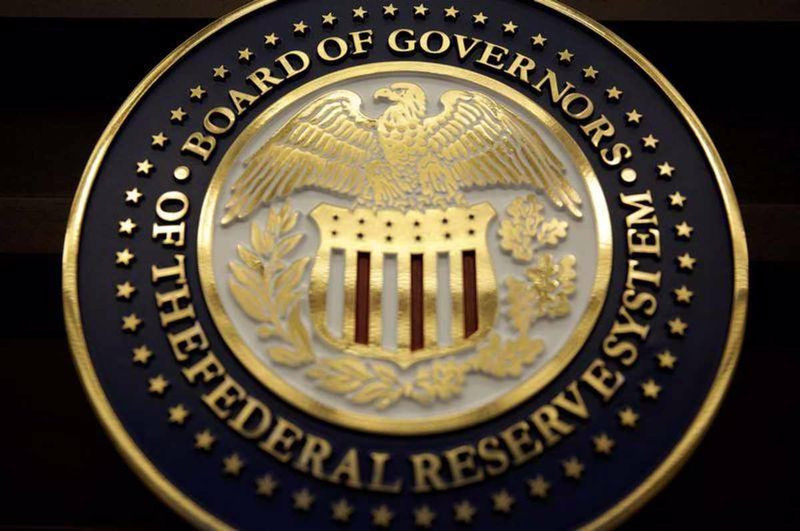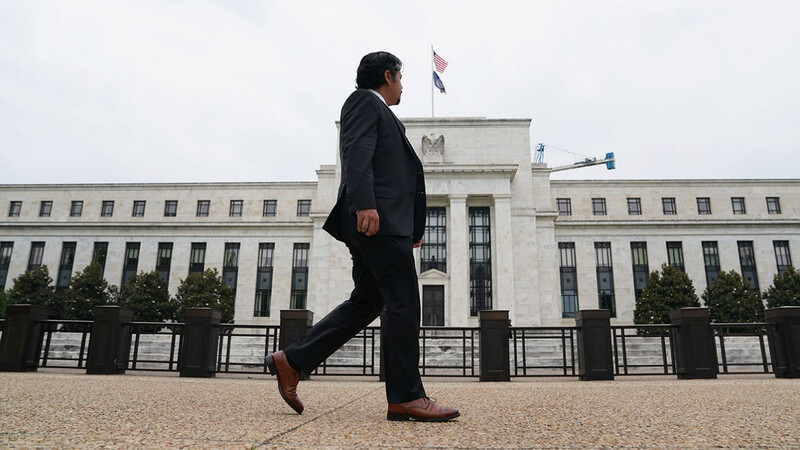
The greenback is on the crest of the most bullish wave in more than half a century. And so far there are few signs that this wave will come to naught in the near future.
In the third quarter, the greenback gained about 7% in weight, which was the best indicator since the beginning of 2015. It was also the fifth consecutive quarterly growth, the longest since 1997-1998.
This year, the USD exchange rate has risen by about 17%. Closing near current levels by the end of 2022 would allow the dollar to record the largest annual growth since the era of free-floating exchange rates began more than 50 years ago.
The latest data from the Commodity Futures Trading Commission (CFTC) showed that in the week ending October 4, speculators reduced their net long positions in the US currency to the lowest since March.
However, hedge funds have held a net long position in USD every week since August last year, and the $10 billion bet is still a clear confirmation of the greenback's superiority over its main competitors.
The dollar's rally this year has been so relentless that many currencies have fallen to historic or record lows.
A rapidly growing greenback raises the cost of borrowing, especially in emerging markets, so servicing loans or debt in a depreciating local currency increases the risk of default.
In addition, the strengthening of the USD makes imports less expensive in America, and an increase in interest rates in the United States actually exports inflation to other countries.
This state of affairs is quite satisfactory to Federal Reserve officials, but it is causing increasing dissatisfaction with other central banks.
Some of them are already making some efforts to protect national currencies from further weakening.
In particular, in September, for the first time since 1998, the Bank of Japan conducted currency interventions in support of the yen.
The Bank of England announced the purchase of long-term government bonds to stop the panic in the local debt market and protect the pound from collapse.
If this trend continues to gain strength, then the multi-month USD upward trend may cease to be a one-way street.
However, for now, the US currency is not thinking of slowing down, since the Fed is still determined to aggressively raise rates - a position that few other central banks can match.

The Fed has already raised the key rate by 75 basis points three times in a row, and recent comments by FOMC officials suggest that they will implement a fourth such increase next month.
The day before, Chicago Fed President Charles Evans said he still sees the federal funds rate above 4.5% in early 2023, where it may remain for some time.
Commerzbank analysts predict that the dollar will remain strong as the Fed maintains a hawkish position.
"The market now expects that the Fed will significantly raise rates in the coming months, and then will keep them at these levels for a longer period. The economy and/or inflation in the US will probably have to weaken significantly over a short period of time for the Fed to take a less hawkish position, and such a development looks rather unlikely. This means that now there is little that can prevent the dollar from strengthening," they noted.
ING strategists also remain bulls for USD.
"The main narrative of the Fed's hawkish policy – in tandem with ongoing geopolitical problems and concerns about energy prices – should maintain a low interest in risk and active flight to safe havens, including the US currency," they said.
"Retesting the USD of the September high around 114.80 is our baseline scenario for the next few days," ING added.
Societe Generale economists believe that the greenback could reach a 2001 high of 121 in the event of a breakthrough above 114.80.
"After the release of the report on the US labor market on Friday and ahead of inflation data in the United States on Thursday, we can only react mainly to the already known news. US employment data is strong enough to make a 75 bps rate hike on November 2 practically a done deal; the Chinese economy is weak; the conflict in Ukraine continues. Therefore, the dollar should remain strong," they said.
"We expect a USD rebound in the direction of 113.60 and a multi-year peak around 114.80. Only if the support zone of 110.00-109.30 is broken, there will be a risk of a prolonged pullback. After 114.80, the next potential obstacle for dollar bulls is at the level of 117, and then at the 2001 high of about 121," Societe Generale said.
The bank's specialists believe that the EUR/USD pair may return to the September low around 0.9500.
"Ahead of the release of the US consumer price index on Thursday, the mood in the EUR/USD pair will be defensive. A return to the September low is not excluded amid the widening of the interest rate differential between the US and the eurozone, as well as the escalation of the conflict in Ukraine. The bearish seasonality in October also cannot be ignored. The 0.9500 mark is the nearest support," they noted.
A broad downward trend in the EUR/USD pair still prevails, Scotiabank analysts say.
"Intraday patterns look weak; the dollar puts pressure on the euro support in the area of $0.9700, leaving the EUR/USD pair on the threshold of returning to the range of 0.9600-0.9550," they said.
HSBC strategists are selling the single currency against the US dollar, waiting for the EUR/USD pair to retest the lows of 2022.
They have been betting on the depreciation of the euro against the greenback for more than a year and do not believe that it will reverse.
"The key components that supported the strengthening of the US dollar – the soft dynamics of global growth, unstable risk appetite and relatively higher yields in the US – should continue in the coming months," HSBC said.
"A Fed reversal is unlikely at this stage, while European data continues to deteriorate," the bank's analysts said.

The Fed is expected to raise interest rates by another 75 basis points at the November meeting. At the same time, money markets assume that an increase of 50 bps is likely in December, given the central bank's ongoing attempts to reduce inflation.
It is noteworthy that recently expectations regarding a reduction in interest rates in the United States in 2023 have somewhat weakened, which turned out to be a hawkish development for the dollar.
"The Fed's main focus is on inflation, the decline of which, we think, will take longer to cause a dovish reassessment of expectations about the FOMC's actions," HSBC analysts noted.
They predict that the single currency will experience difficulties amid signs that economic activity in the eurozone will continue to weaken.
"Our indicator of speculative short positions on the euro has already increased significantly. However, this indicates only the possibility of a short compression, rather than a fundamental trend change. Thus, the risk-reward ratio supports the sale of EUR/USD", according to HSBC.
"The US employment report last Friday was quite strong and was a big blow to everyone who expects the Fed to turn around in the near future. The central bank should keep the gas pedal in place and make it clear that the economy is still too strong, including the labor market and inflation," TD Securities strategists said.
"Ultimately, Forex is still a game of buying the dollar, and in fact no relief is expected for the euro until the Fed makes significant progress in cooling the labor market and inflation," they believe.
The single currency risks sinking even lower if it breaks through the key support level of $0.96, according to DBS Bank economists.
"The Sentix investor confidence index in the eurozone fell to -38.3 points in October, which is the worst indicator since May 2020. More importantly, the current situation assessment index dropped to -35.5 points from -26.5 points. The Bloomberg consensus forecast implies three quarters of negative growth for the German economy from the 3rd quarter of 2022 to the 1st quarter of 2023 amid double-digit inflation in the 4th quarter of 2022," they said.
"The euro has an important support level just below $0.96. Failure to protect it can send the EUR/USD pair to the range of 0.8270-0.9500, which was observed in 2000-2002," DBS Bank predicts.
In case of strengthening of the bearish momentum and updating of the EUR/USD annual low near 0.9540, bears may rush to 0.9485 (the Fibonacci correction level by 61.8%). A breakdown of this mark will make the pair vulnerable to falling to the September 2001 low of about 0.9335.
Alternatively, a break above the weekly resistance line, which is currently in the area of 0.9745, will allow EUR/USD to extend the recovery to 1.0000 (the high of the current month from October 4). Next, the 1.0050 mark (weekly peak of September 20) may come into play, which will precede the previous monthly high of September 12 near 1.0200.





















